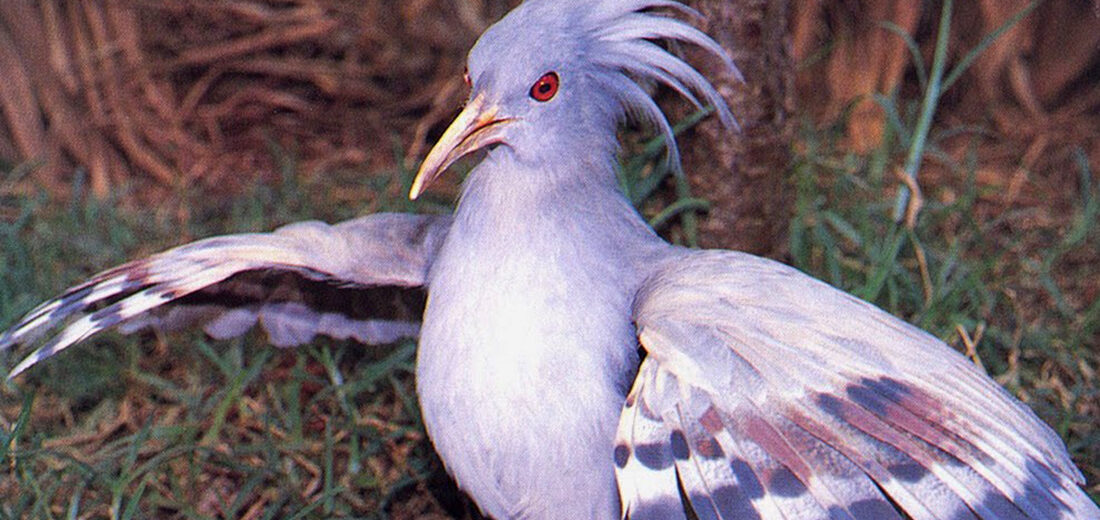
Hailing from the forests of New Caledonia’s main island, in the South Pacific, the kagu is a unique nearly flightless bird indeed. Its colors are not typical of other ground-dwelling birds, in that they are brighter and less muted and they have bright red legs. With less than an estimated 1,000 individuals remaining, these birds are threatened with habitat destruction, disease, and invasive species. They are listed as Endangered by the IUCN and their numbers are deceasing.
First the Stats…
Scientific name: Rhynochetos jubatus
Weight: Up to 39 ounces
Length: Up to 22 inches
Wingspan: Up to 32 inches
Lifespan: Up to 20+ years
Now on to the Facts!
1.) The kagu has skin flaps that cover its nostrils, called corns, that are presumed to have evolved to keep dirt out while the bird forages for food.
2.) They have a powder down which helps keep them dry and insulated from the extremes of New Caledonia’s tropical climate.
3.) The family name Rhynochetidae, comes from the Greek words Rhis which means ‘nose’ and chetos which means ‘corn’. When put all together it means corn-shaped nose.
4.) Humans, dogs, cats, and deer are their primary threats.
5.) Larvae, spiders, cockroaches, beetles, centipedes, millipedes, snails, worms, and lizards are all on the menu.
But wait, there’s more on the kagu!
6.) Kagus are diurnal (active during the day).
7.) Their call sounds kind of like a cross between a dog’s bark and a rooster’s crow, at the same time. The female’s song is shorter and faster than that of the male. They also produce a soft clucking sound and hiss.
Did you know…?
Although they don’t assist in rearing the young, older family members, from previous broods, will assist in protecting the general territory. So this indicates a form of cooperative breeding.
8.) They are known for standing for long periods of time, on 1 leg, waiting for prey to pass by.
9.) The kagu is monogamous (mates for life).
10.) Females will lay a single egg that incubates for up to 37 days.
But wait, there’s more on the kagu!
11.) Both parents help rear their young.
12.) Due to an underdeveloped breast bone, these birds aren’t capable of “normal” or “prolonged” flight.
13.) Kanak tribes in the area of Houaïlou have referred to the species as the “ghost of the forest.”
14.) The New Caledonian islanders sometimes keep kagus as pets. They are typically calm in disposition and aren’t dangerous to humans.
Now a Short Kagu Video!
Be sure to share & comment below! Also, check out the Critter Science YouTube channel. Videos added frequently!
Want to suggest a critter for me to write about? Let me know here.



